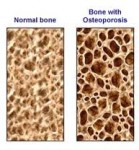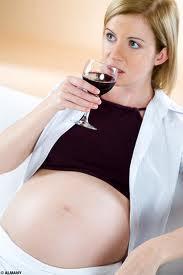 The increased risk of death associated with alcohol intake is not the same for men and women. A study that compared the amount of alcohol consumed and death from all causes among nearly 2.5 million women and men showed that the differences between the sexes became greater as alcohol intake increased, as described in an article in Journal of Women’s Health, a peer-reviewed publication from Mary Ann Liebert, Inc., publishers. The article is available free on the Journal of Women’s Health website.
The increased risk of death associated with alcohol intake is not the same for men and women. A study that compared the amount of alcohol consumed and death from all causes among nearly 2.5 million women and men showed that the differences between the sexes became greater as alcohol intake increased, as described in an article in Journal of Women’s Health, a peer-reviewed publication from Mary Ann Liebert, Inc., publishers. The article is available free on the Journal of Women’s Health website.
In the article “Effect of Drinking on All-Cause Mortality in Women Compared with Men: A Meta-Analysis,” Chao Wang and coauthors, Chinese Academy of Medical Sciences and Peking Union Medical Sciences (Beijing, China), modeled the relationship between the dose of alcohol consumed and the risk of death, comparing the results for drinkers versus non-drinkers and among male and female drinkers. Females had an increased rate of all-cause mortality conferred by drinking compared with males, especially in heavy drinkers.
“While alcoholism is more common in men than women, female drinkers face greater risks to their health compared with male drinkers,” says Susan G. Kornstein, MD, Editor-in-Chief of Journal of Women’s Health, Executive Director of the Virginia Commonwealth University Institute for Women’s Health, Richmond, VA, and President of the Academy of Women’s Health.
New Rochelle, NY, April 9, 2014

 The density of bones, measured as bone mineral density (BMD), is strongly related to osteoporosis. Elderly women with osteoporosis, in particular, are at increased risk of fractures of the hip, arm, and spine; such fractures often relate to severe disability. With data on alcohol collected as part of a clinical trial on the prevention of osteoporosis, investigators in Finland have related alcohol consumption to changes over three years in BMD. After those excluded due to incomplete data, data on 300 women were available for analysis. The majority of women were abstainers or consumed little alcohol. Nevertheless, the results support much earlier research: regular, moderate drinking is associated with higher levels of BMD (i.e., lower risk of osteoporotic fractures) than is abstinence.
The density of bones, measured as bone mineral density (BMD), is strongly related to osteoporosis. Elderly women with osteoporosis, in particular, are at increased risk of fractures of the hip, arm, and spine; such fractures often relate to severe disability. With data on alcohol collected as part of a clinical trial on the prevention of osteoporosis, investigators in Finland have related alcohol consumption to changes over three years in BMD. After those excluded due to incomplete data, data on 300 women were available for analysis. The majority of women were abstainers or consumed little alcohol. Nevertheless, the results support much earlier research: regular, moderate drinking is associated with higher levels of BMD (i.e., lower risk of osteoporotic fractures) than is abstinence. Heavy drinking during pregnancy disrupts proper brain development in children and adolescents years after they were exposed to alcohol in the womb, according to a study supported by the National Institutes of Health. The study is the first to track children over several years to examine how heavy exposure to alcohol in utero affects brain growth over time.
Heavy drinking during pregnancy disrupts proper brain development in children and adolescents years after they were exposed to alcohol in the womb, according to a study supported by the National Institutes of Health. The study is the first to track children over several years to examine how heavy exposure to alcohol in utero affects brain growth over time. An analysis among more than 40,000 postmenopausal women who were in the California Teachers Study was carried out to determine if there were differences in risk of breast cancer among women consuming alcohol according to their previous or current use of hormone therapy (HT). In the cohort, 660 women were diagnosed with invasive breast cancer during follow up.
An analysis among more than 40,000 postmenopausal women who were in the California Teachers Study was carried out to determine if there were differences in risk of breast cancer among women consuming alcohol according to their previous or current use of hormone therapy (HT). In the cohort, 660 women were diagnosed with invasive breast cancer during follow up.